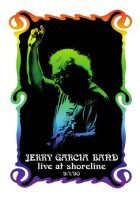
by Fumo Verde
In June, John Fogerty was inducted into the Songwriter's Hall of Fame. It's an honor bestowed upon such greats as Hank Williams, George Gershwin and Duke Ellington; Fogerty is just as deserving. Between 1968 and 1972, Creedence Clearwater Revival (CCR), led by John Fogerty, not only had 20 singles on the Hot 100 for over a year, but also had nine Top 10 hits in a row. CCR was, and still is, the most successful American rock quartet, earning 21 gold and platinum records and The Long Road Home will make it clear why.
Fogerty and the band are known for songs like "Proud Mary", which, when tallied, has been played over 7.5 million times on the radio and TV airwaves. "Down on the Corner" and "Up Around the Bend" have simple cord riffs and drum beats that are uplifting and fun. Others, such as "Fortunate Son" and "Who'll Stop the Rain", are political and were shaped by Fogerty's discharge from the army in '68. He hasn't touched them since originally writing them, yet those songs resonate just as strongly today as the country finds itself locked in similar circumstances of fighting an increasingly unpopular war. That shows you the staying power of a true musical artist.
This CD is filled with 25 tracks, four of which were recorded live on his 2005 tour, including a blistering version of "Fortunate Son". Most of these tracks were first recorded between '68 and '72, yet some such as "Centerfield" and "Hot Rod Heart" were recorded after the nasty divorce from his band and his record label, Fantasy Records. Also included is the infamous song "Run Through the Jungle" which brought Fogerty through the doors of our gracious court system when Fantasy sued him. They claimed the chorus for "The Old Man Down The Road" was too much like the aforementioned song. Fogerty won the case; he illustrated how the songs were different with his guitar on the witness stand. I bet nobody tried to get out of jury duty then. Both songs are present for you to judge them for yourself.
For almost a decade, Fogerty refused to sing any of his CCR stuff because of legal entanglements, but the lead voice of Swamp Rock could not be quelled for long. Soon after an emotional visit to the grave of original blues master Robert Johnson and with new owners at Fantasy Records, Fogerty decided to bring that special, southern-twanged bayou beat back to his fans. Even his recent recordings have his distinctive sound, whether it is his twanging guitar, or his gut-wrenching voice or the lyrics that are true to life. One still envisions the days of protest, free love and long hair, and hitch hiking across the USA.
If music is the soundtrack of our lives, than Mr. Fogerty is one of our best authors. He has written music that has lasted more than its normal duration, not just designated to the "oldies" channel on the FM dial. The reason for this is because Fogerty, now more than ever, is happy about being a rock artist and his songs show it, like "Travelin' Band", which he opens each concert with.
John Fogerty is a class act, a bandleader, guitarist, and vocalist; one whose songs have been covered by people like Ike and Tina Turner to punk rockers like Stiv Bators and has been used in endless Vietnam-War movies. If this CD is the best of John's past, I can't wait to hear his future. For now, I'll just have to pack a greenie, sit back and let this CD take me on the journey down that Long Road Home.
Fumo Verde--- Peace, babies.







